
ou don’t need me to tell you that wine can evoke some of the most delightful emotions in the world, thanks to its ability to touch all of our senses. This May, I experienced just such an emotion during a magnificent dinner accompanied by exceptional vintages including, among others, 1979 Clos du Mesnil, 1926 Chambolle-Musigny (LigerBelair), 1923 Gevrey-Chambertin (Liger-Belair), 1915 Richebourg (Liger-Belair), 1896 Yquem and the apotheosis – the incredible 1865 La Romanée (Bouchard), which has amply demonstrated its ability to hold its own as one of the greatest wines of the 19th century.
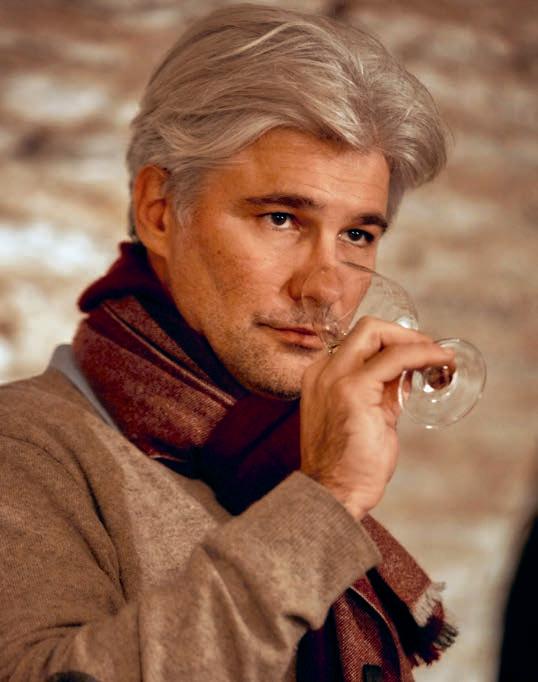
So it was that I came to experience my very own viticultural aurora borealis…
Aristotle (384-322 B.C.), a fervent wine lover, said that ethical virtue is a mean between two excesses... according to which the result is wisdom in the search for the Good. Is it not ultimately in this quest, in this sphere of virtues, that every great winemaker seeks his own appeasement, and we in his wine? Aristotle’s texts also include the first theory of perception, with detailed studies of our 5 external senses… which everyone can learn from, and which, above all, can lead us to the discovery and the pleasures of a wine…
So, on that fateful ‘Aurora Borealis’ evening, I admired these venerable bottles, their labels, their corks and I admired the colour of each wine. Then I touched the bottles, the distinctive shapes of their day, and felt the different densities of the glass that held these treasures. We listened to these wines, some of which had been confined in their bottles for over 150 years, as they left their nests to blossom in our glasses designed to meet their needs. Then came the great moment of smelling, of being infused with an extraordinary sensory journey. And the grail, of course, to taste, to savour and relish the wine as it surrenders itself to you in a final burst of generosity and sheer pleasure…
We are truly fortunate to be in this profession, but our greatest joy is in being able to share this good fortune by bringing you such emotions through our shared passion. My colleagues will show you how in the next few pages, and it seems clear that the sales of the coming weeks and months bespeak the most exquisite sensations, from the aurora to the borealis…
On 23 June, our first physical sale on French soil, ‘Dear pebbles’ will also be a world first for a memorable auction that will take place directly in the winery of one of the greatest (and most magnificent!)
Médoc châteaux, which is celebrating its 300th anniversary with us by presenting an impressive vertical of 60 vintages, some of which date back to the 19th century… All formats of Château Ducru-Beaucaillou will be represented, ranging up to 27 litres, and all the great vintages await you, right down to the entire barrel of the great wine…
On 5 June, don’t miss our Kipling No. 7, ‘Humble treasures’ in Geneva, which will showcase a private collection nearing 800 bottles of a liqueur whose secrets and history are still intriguing… Chartreuse. Its intrinsic qualities make it a sought-after nectar the world over, and happy are those who are already are familiar with its benefits…
On 3 July, our Kipling No. 8 ‘Sunkissed’, also in Geneva, will provide an opportunity to contemplate a private collection that is astonishing in terms of the number and quality of its large formats. Not to be missed, if only for the pleasure it will afford, the morning dedicated to the majestic Penfolds Grange, from the splendid 1951 vintage to the present day, with nearly 600 bottles and large formats. And to round off the meal, a selection of whiskies… to savour before the Chartreuse ?
Our wine o’clocks are still a monthly event, complete with their surprises… and I hope you enjoy watching these sales as much as the whole team enjoys putting them together.
See you soon.
Warm regards, Michael
2 time to B wine #16 — may 2024 — michaël's aurora borealis

chances !
ine lovers, enthusiasts, the wine o’clocks are your monthly rendez-vous ! These online sales are made possible thanks to you, bringing together buyers and sellers from all over the world. Since the beginning of 2024, we have had the pleasure of presenting almost 750 lots. The collections of enlightened wine lovers come from as far afield as Switzerland, France and Luxembourg, and every month we put together a varied selection of still and sparkling wines and spirits from the finest regions of the world.
Every second Tuesday of the month, at 2pm, the auction begins, offering a wide selection of rare bottles of perfect provenance. It’s at this point that the fervour of the auction really takes hold. A few days beforehand, some people will already have taken the time to place bids on the bottles they covet, and the race is on. The online system is intuitive
and allows bidders to see the status of their bids from day to day. Auctions have a life of their own. Each day is both an opportunity and a risk. A chance to bid on a lot that may not have been considered by other bidders, a risk of losing the winning bid to someone more ambitious. The battle is even more thrilling once the sale is underway. A handful of seconds... Tick, tock, tick, tock... Even winning bids are up for grabs. New bidders can enter the race and try to snap up bottles that are already the envy of the world, as well as seizing opportunities that have remained in the shadows. The auctions are exhilarating with one lot after another, the Burgundy appellations ceding to the shores of Bordeaux, the hillsides of the Loire Valley, the terroirs of Champagne and then Italian, Spanish and American wines... with spirits following close behind. The tastes and colours will delight your senses, and young and old vintages
will come together at the auction to offer everyone the chance to win these bottles, symbols of sharing and passion.
We are committed to supporting you, buyers and sellers alike. Wine is synonymous with sharing. Our mission is to enable the exchange of these bottles, to keep them alive. Each sale is a new creation, a new book that we create by advising the sellers and relaying the story to the bidders. The history of the appellations, the vintages and the origins of the bottles are essential elements in the life of a wine or spirit. Baghera/ wines expertise is devoted to history, sharing and life. With an average of four regions and two hundred lots represented in wine o’clocks in recent months, the opportunities to satisfy your expert palates are many.
So stay tuned, the race against time has just begun… Cheers !
Camille Balboux
3 time to B wine #16 — may 2024 — camille's wine o'clocks
from The New York Public Library, by Unsplash
Royalty-free photo
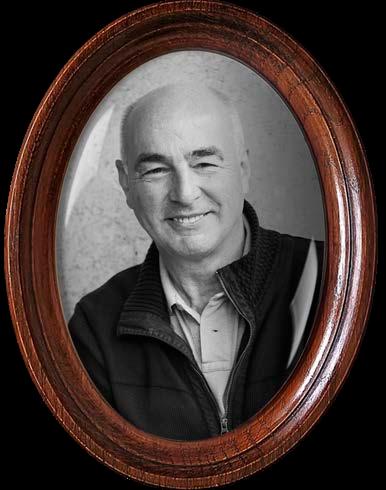
a child of the Médoc, I grew up in the heart of the peninsula, enjoying the beauty and simplicity of nature in total innocence, roaming the vineyards and meadows, fishing for eel in the ditches or shad on the estuary, contemplating the honking migration of geese in autumn and their equally spectacular return in spring, listening to the high-pitched calls of thrushes on nights of a full moon. Occasionally, I would venture north, beyond the Mouline stream, to brave the ‘bamboo forest’ at the bottom of Léoville Barton. It was dark, damp and lush, with a stream running through it and a large cork oak leaning over it. I was transported to the middle of the jungle, hoping to find Mowgli or the dark, furtive shadow of Baghera. Later, I would venture into the Archevêque marshes, at the bottom of Lanessan towards Caronne, disturbing furtive snipe and wary teal in the flooded peat bogs, covered in withered reeds. On the bedside table, Kipling’s book had given way to Maurice Genevoix’s Raboliot and Marcel Pagnol’s La Gloire de mon Père
I spent hours in the damp cold of the Médoc winter watching the winegrowers prune the venerable vines, the women winegrowers carrying out the acanage (tying the base of the vine to a stake in order to keep the vine upright) with vime (strands of wicker) behind them, or in the cellars, the wine merchants turning the esquives (small conical wooden plugs) with rushes. And so, by degrees, the beauty of a perfectly executed, thoughtful, precise and elegant process became impressed upon me. And frugal. I learnt, beyond its hashness, the great nobility of manual work.
The seasons dictated the rhythm of life. I so loved the fragrance of the vines in flower in spring, the scent of fermenting vats or the smoke from the vine shoot fires in autumn. I loved the multitude of vine stocks in winter, impeccably lined up on the green carpet of weeds, like so many soldiers in a huge army on campaign. Draped in their brown coats of withered bark, their arms stretched out along the wires, all similarly encircled by an orange wicker stem linking them to their grey acacia stake, they were like so many people crucified on an infinite Golgotha. But soon, life would return and with it the promise of a new harvest, one that was bound to be exceptional.
I remember the little dry-stone vineyard huts where the winegrowers used to take shelter to rest, sharpen the stakes or split the wicker. I would happily join them there to listen to their candid stories, full of bucolic imagery, wisdom and rustic humour, punctuated with a few words of patois, from their moustachioed lips. A rich language, not always polished but poetic, which they would declaim with the eager relish typical of the pronunciation of
the Occitan dialect. A precious intangible treasure, testimony to a rare but still living culture.
In the small fireplace, the embers of the vine shoots crackled under the oily drops oozing from the tricandillas, which would be slowly grilled before they were eaten. Using the tip of the knife, the tripe would be poked directly on the grill and placed on the slices of bread held in the left hand, which served as a sort of plate. A piece of tricandilla was then sliced from the bread before being brought to the mouth, again with the tip of the knife. After several repetitions, the bread, deliciously soaked in the potent juices, was in turn eaten in small pieces cut in the same way with a knife. In the Gascon culture, it would have been highly inappropriate to bite into a loaf of bread: only dogs do that! The savouring was slow, earnest and delightful. It was punctuated by sips of wine served in thick, chipped Duralex glasses. It was lee wine, purplish red, dark, deep, a little harsh, but in this crude setting, it was the perfect accompaniment to these hearty foods.
In the vast vegetable garden tended by Maurice, a space was set aside for sowing radishes. As soon as spring returned, the soil was aerated with a spade, and a garden fork was used to break up the clods, followed by a rake to further refine the soil so that the radishes could grow easily. To mark the boundaries of the bed, a hemp cord was laid between two small stakes of turned wood. Along this line, furrows were dug, the sides of which were tamped down with the back of the rake. Finally, the top of the bedding strip, which had to be perfect, flat and free of weeds and stones, was levelled. Then came sowing time, followed by the long wait for germination: 4 to 5 weeks! An eternity for a boy who comes to check it every evening on his way home from school. What a reward it is to be able to pick the best ones at last, wash them in the fountain at the foot of the ginkgo biloba, wrap a piece of raffia around the bundle and proudly take it to the kitchen. A few family congratulations were offered before the harvest was proudly tasted on the corner (the end) of a crusty baguette. This was how we learned to farm patiently, carefully and precisely, with experience and the essential transmission of know-how, fatigue and aches and pains.
Inspired by the landscapes that surrounded me, the precise motions of vineyard and cellar work and the tales and legends of the elders, I developed a special sensitivity and a strong attachment to the Beaucaillou land. I was infused with the deep satisfaction that comes from a job well done, the wonderful reward of a well-managed harvest, but also the desolation of a frost or hailstorm, the raging attack of slugs, mildew, rust... or, more simply, the rotting of a seed in flooded soil.
4 time to B wine #16 — may 2024 — a man, a story…
In mid-spring, the house would come alive around the Primeur tastings. Of course, this was nothing like the great celebration it has become today. The brokers from la Place would come to the Château to assess the wines from the latest harvest before marketing them to the Bordeaux wine trade.
Every so often, at the same time, my elders had the honour of welcoming importers: English, American, Belgian, Hanseatic or Helvetian, and a few rare Parisians. My mother would set the table in the large dining room. She would bring out the damask tablecloths, the fancy napkins, the fine silverware, the Vieillard & Johnston services and the crystal glassware to show off our wines to their best advantage.
The menus were organised around local, seasonal produce, most of it grown on the estate. They were cooked to perfection by Louis or Helmut: warm white asparagus with hollandaise sauce, grilled salmon steaks (from the estuary) with béarnaise sauce, suckling lamb (a delicious caramel-coloured crust covered the deliciously moist white meat) roasted with aillet (garlic shoots), pommes dauphines (authentic) and fountain cress, strawberries in wine.
Two days before a reception, my father would go down to the cellar with a candlestick and a bottle basket, choose the wines, mark the top of the bottle with a line of chalk or a damp finger (they were very rarely labelled in the cellars) to decant them in the same position and finally put them upright. From adolescence onwards, I was sometimes allowed to accompany my father.
The old wine cellars, located in a wing of the château to ensure the temperature and humidity required for optimum conservation of the wines, are superb. Comprising five successive vaulted cellars, they were built from beautiful yellow Bourg stone. Wrought-iron gates and dim lighting added an ecclesiastical mystery to the visit.
As for champagne, it was often Krug, both for taste and because one of the heiresses had become a Bordelaise through marriage. For whites, the Domaine de Chevalier of friend Claude Ricard was often the family’s favourite, sometimes Carbonnieux, more rarely Haut-Brion. For reds, of course, it was Ducru-Beaucaillou vintages. The great privilege of birth is to be given the chance to be introduced to wine through the wines of the period: the 1961s, the 1959s, but also the 1962s or even the 1953s and 55s.
The decanting took place in the pantry, a few hours before the service. I was introduced to this art at an early age, and I loved practising it with my father Jean-Eugène and André, the beloved Maître de Chais. First of all, uncork the bottle, holding it straight and still and trying to avoid breaking the cork. In the event of an accident, remove the floaters with a special tool, and if necessary, place a sieve over the decanter. Check the smell of the cork, which should be clear, sometimes with delicious notes of black olives or crème de cassis. Light the candle, choose the decanter and carefully pour in a good quality wine. Drain well. Take the bottle and tilt it towards the decanter, taking care to respect the positioning marked out in the cellar. Start pouring slowly and wait patiently for the sediment to rise above the flame. Once the sediment has been spotted, continue to pour gently until it reaches the shoulder and then lift the bottle before it enters the neck. Then came the moment of pleasure that we loved so much: pour a dash into the glass, sip the wine, sniff it and finally take a small swig (which we omitted to
spit out) and finally judge the whole. The entire process, repeated for each bottle served, was a very compelling introduction to wine tasting for the teenager that I was.
For family celebrations, my father, as much for pleasure as to judge the relative quality of his wines and also to train our palates, would choose reds from elsewhere. Burgundy wines I remember in particular were from the Marquis d’Angerville and even Domaine de la Romanée-Conti. Later, I would bring Robert Drouhin’s wines myself. The Medoc wines, all the Premiers and the grands Seconds. But I was often spoilt by the 1961 Petrus, of which my father had carefully kept a few bottles after he had sold enough to pay for the barrel he had bought en primeur for his wine trading business. Later, I was generously graced with a 1967 Yquem, acquired at auction in excellent condition after Japanese customs refused to import it on the grounds of an analytical defect. In this way, my father trained experienced and demanding palates... in the hope that they would one day be proficient !
From August 1981, when I joined Peter Sichel, I had been away from the land of my birth, travelling the world to sell my employer’s wines and then, from 1985, to build up a distribution network for Lillet, which I had just acquired with a group of investors. But I gradually felt my passion for Ducru-Beaucaillou and my desire to one day take over the family business rising within me . My father encouraged me to do so, firstly by passing on my shareholding to me very early on, and then by making me a member of the Supervisory Board of the family business. After he passed away in 1998, my brother François-Xavier decided to reorganise the family group, with himself alone in Pauillac at the head of Grand Puy Lacoste and Haut-Batailley, and leaving our mother, our sister Sabine and myself Ducru-Beaucaillou... and Ducluzeau.
When I took over the reins at Ducru-Beaucaillou, Virgil’s Les Géorgiques and Columelle’s De re Rustica joined my library, as did Viala and Vermorel’s Dictionnaire Ampélographique, Cocks & Feret’s Bordeaux et ses vins, Emile Peynaud & Jean Ribéyrau-Gayon’s Traités d’œnologie and Michel Serre’s Contrat Naturel. Meanwhile I was installing the pieces of contemporary art and design that I had accumulated.
I had reached a certain maturity that allowed me to express a holistic approach in my business project: a deep attachment to the Beaucaillou land, its history and its Médoc culture, but also my passion for viticulture, great wines, cuisine, art and design, great music and opera.
Finally, my current project for Ducru-Beaucaillou is also to ensure the perpetuation of these intense moments, to secure, in the contemporary world, the continuity of the Médoc cultural heritage, to do everything possible to recapture in the wines the emotion that the 1959 and 1961 Ducru-Beaucaillou wines aroused in me.
I understood then that my path would be different from that of the other children in the family.
And so, little by little, my vocation took shape, fuelled by a love of my native land and a desire to share its beauty and its narrative with the world, but also to bring to it the experiences and wonders I had experienced on my travels and visits.
I carried within me the spirit of the Médoc, a blend of simplicity, resilience and a deep connection to the land. I brought with me a taste for science, progress and innovation - values that would guide my every step towards realising my Médoc dreams.
Bruno-Eugène Borie
5 time to B wine #16 — may 2024 — bruno-eugène borie, château ducru-beaucaillou
6 time to B wine #16 — may 2024 — “dear pebbles” facts & figures
60 vintages from 1887 to 2023

3'303 bottles

26 imperials

15 melchiors

700 magnums

6 salmanazars

6 babyloniums® Name created and trademarked by the Château

5 “Celebration Collection”
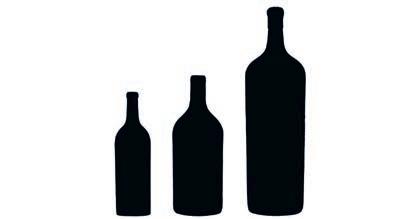
1 “Jade Jagger Collection” Croix de Beaucaillou 2009

138 double-magnums

1 nebuchadnezzar
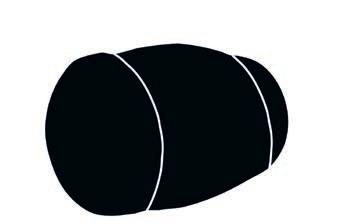
2 barrels


1 Alabaster Case Double-magnum 1982
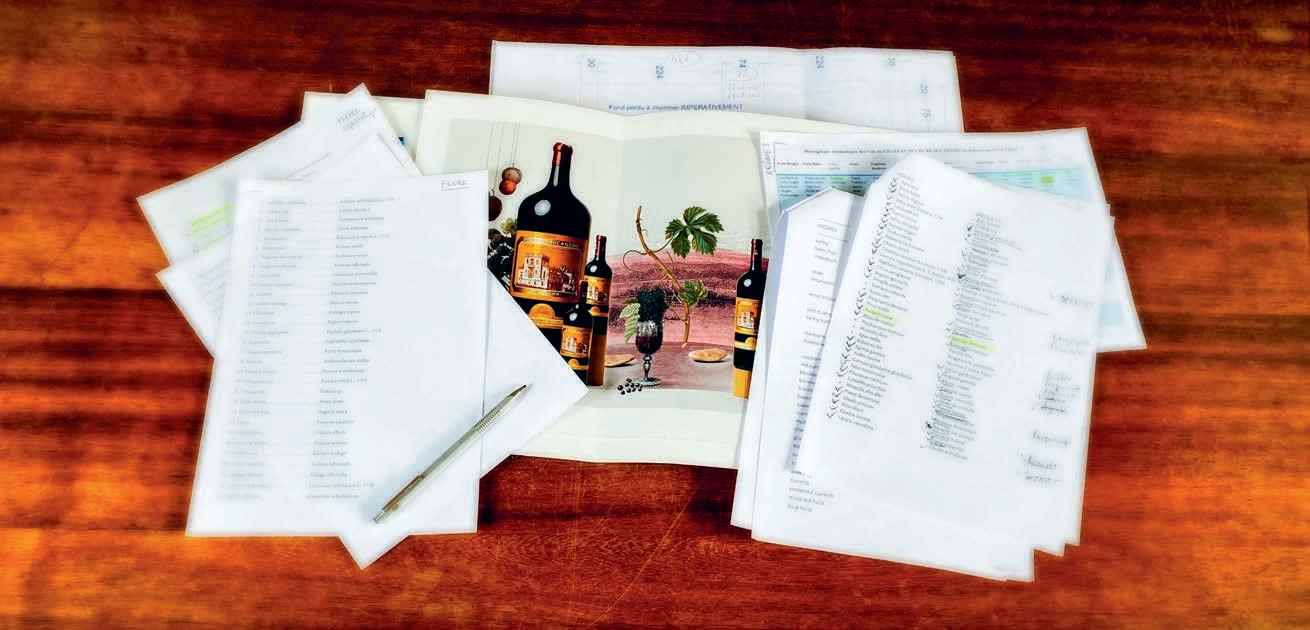
designing
grew up in the countryside, in a discreet village nestled in the heart of the Fontainebleau forest. It was originally a wine-growing village, as I only recently learned. Its thirteenth-century church housed a statue of Saint-Vincent, which has since disappeared, adorned with a vine leaf and a bunch of grapes. The vines were uprooted in 1964, but some of them, overlooked at the edge of the plots, benefited from the light and grew wild to over 8 metres high – they are still producing (Noah, or Gaillard) for the pleasure of epicurean walkers.
On Sunday afternoons, my mother would take me into the forest, leaving my father to work on his sculptures in his suspended studio, where vines (Chasselas de Fontainebleau) twined around the beams. We would set off with Lak, my brother's very red Irish Setter, bag in hand, to gather from the undergrowth. Twigs, moss of all kinds, flowers, bark, dead leaves and puffballs, little mushrooms, fine white Fontainebleau sand and pebbles. Light at the start, weighed down by nature’s spoils on the way back, our adventures were often prolific.
Back home, on an old wooden tray, I would assemble these finds into miniature landscapes. I would start over time and again, choosing, positioning, adjusting, moving, removing – creation is composed of verbs (!) – … in order to achieve an ideal, dreamed-of landscape.
In May 2023, I accompanied Julie Carpentier and Vincent Gelly, our photographer, to Château Ducru-Beaucaillou. The château is imposing, bold. I feel small. The purpose of the meeting in the large dining room, adorned with oak wood panelling, is to lay the foundations for the artistic direction, to sketch out the contours, to define the structure of the triptych comprising the two catalogues and the album. Through our meandering discussions, the title comes into being. The images flowed, intuitive, myriad. To come the combing, culling, drawing, finding the way.
The chosen path is that of a theatre of aromas. And flora. And fauna. And the elements – in fact, the idea is to translate a kind of cosmogony of the château, its ecosystem. The creative process that follows will unfold in several phases. First of all, I will go back to collecting. Then I will select and choose, and finally position and assemble.
So I set off on an exhaustive iconographic search, with lists of the castle's flora and fauna in front of me. Forever and a day. Latin names hide common names, and vice versa… I search, sort, eliminate. The files line up on my computer, reminding me of an inventory by Michel Dave, an art brut artist. Rows and rows… I'm becoming monomaniacal. My days are governed by the search for the right herbaceous plant, the perfect beetle. I go to bed late only to dream of insects and fruit. And skies.
Vincent delivers his cleaned-up photos of the bottles, with a neutral background. It is both abyssal and exciting. The months that follow are entirely devoted to illustrating the 67 tableaux that make up the 2 catalogues of the ‘Dear pebbles’ sale.
Tracey Dobbin's cellar-master tasting notes were my guide in illustrating the vintages. For those from 1887 to 1950, for which there were no tasting notes, I let myself be guided by the weather notes, history and my own sensations… From 1953 onwards, the aromas listed found their place in the tableaux and I tried to respect the order in which they appeared, like actors on a stage. Blackcurrant enters ‘stage right’, then Raspberry, followed by Violet... and Mint enters ‘stage left’ with Truffle... I want to respect the reading order while composing an image that I wish balanced. It is a constant slalom between constraints, and it is a rigorous exercise. But it's the almost childlike pleasure that wins out. The interplay of forms, drawings and colour. And verb as matter. Aromas become embodied, beetles adorn the pebbles. Olivia Bouët-Willaumez
7 time to B wine #16 — may 2024 — illustrating “dear pebbles”, olivia's process
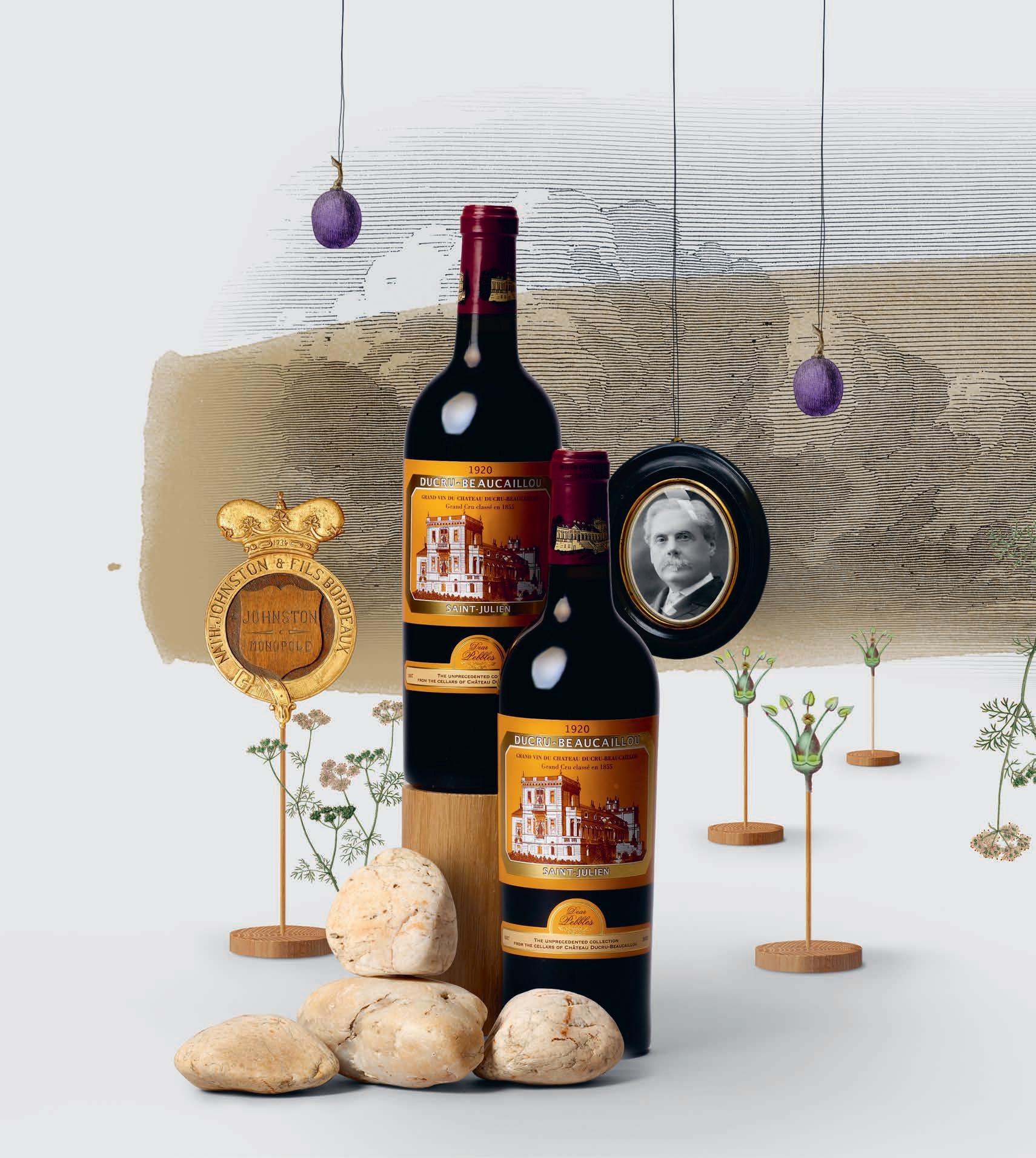
A mild spring initiated an early start to the season, causing the first appearance of flowers on May 23rd, a full two weeks ahead of schedule. Flowering occurred abundantly and uniformly. The summer remained warm and dry, without excessive
Château Ducru-Beaucaillou 1920 —
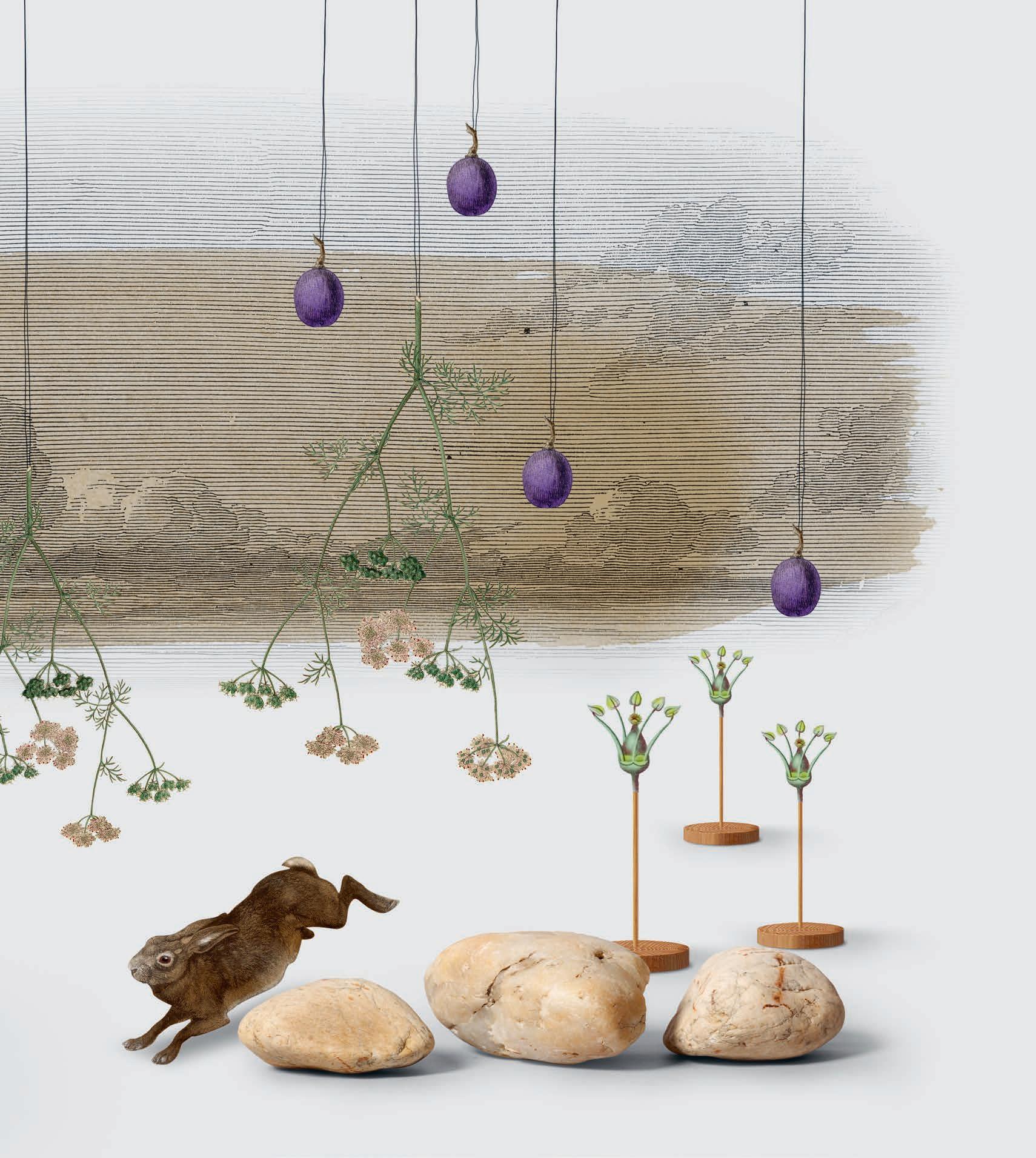
temperature spikes, allowing for a balanced ripening process. September saw sunny days with occasional showers in the second half, which contributed to plumping the berries.
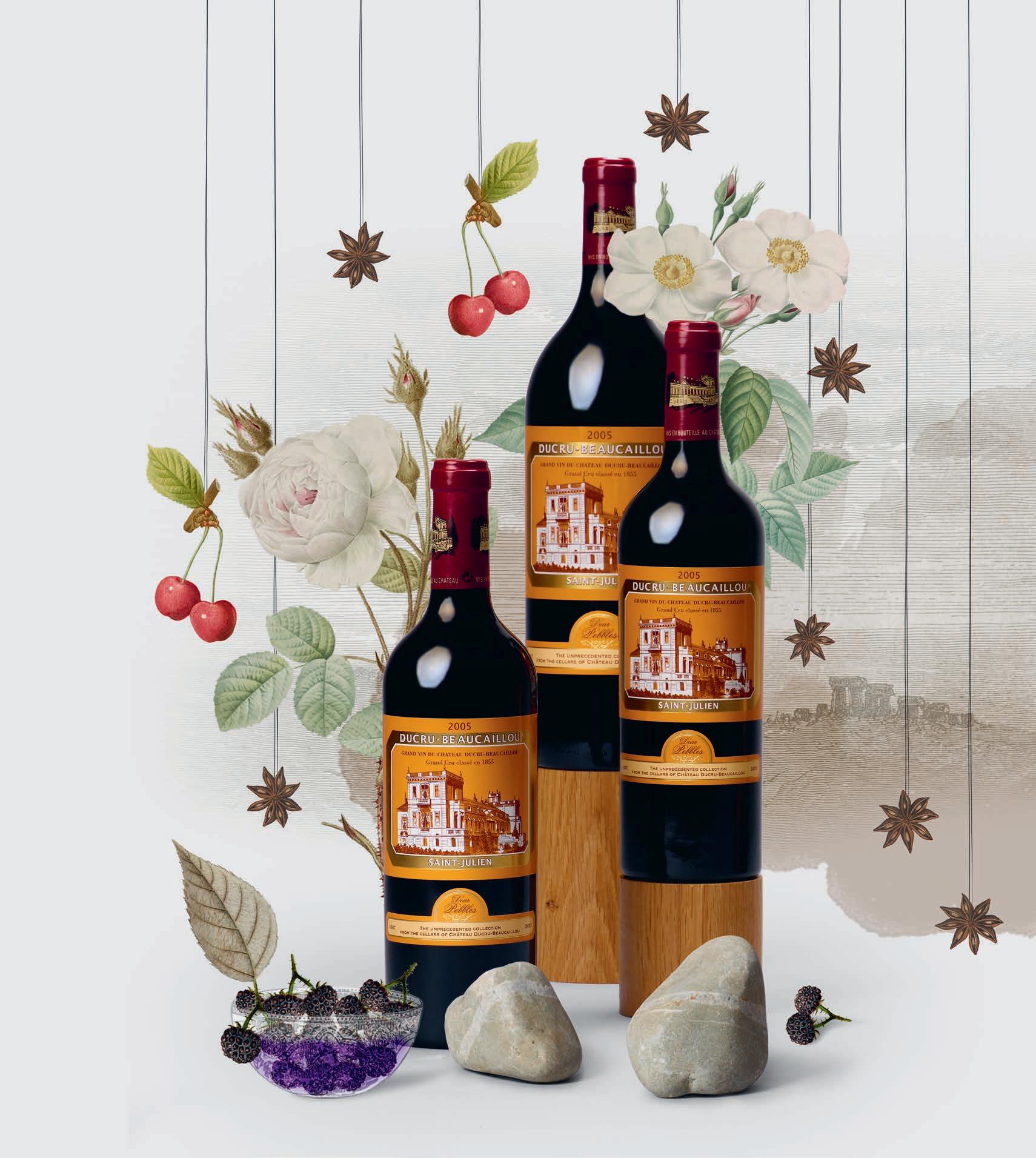 Château Ducru-Beaucaillou 2005 — Sublime perfume of rose petals, kirsch, blackberry preserve and star anise, with a touch of sweet tobacco leaf and fine oiled leather. Full-bodied with a dense core of flavours wrapped in a tightly knit frame of finely polished tannins, supported by
Château Ducru-Beaucaillou 2005 — Sublime perfume of rose petals, kirsch, blackberry preserve and star anise, with a touch of sweet tobacco leaf and fine oiled leather. Full-bodied with a dense core of flavours wrapped in a tightly knit frame of finely polished tannins, supported by

remarkable freshness. This wine possesses an underlying power and energy that builds on the palate, and finishes in an impressively long, perfumed and nuanced aftertaste, with graphite and cedar notes lingering.

sacred secrets
he saga of Chartreuse liqueur is both wonderful and complex. The liqueur’s history is closely linked to the turmoil of French history and to the culture of producing herbal liqueurs, which was widespread throughout Europe at the time.
When the Chartreux brothers inaugurated their new distillery at Aiguenoire in Entre-deux-Guiers in Isère in August 2018, it represented the seventh production site in the history of this liqueur, which began in 1605 at the Vauvert Monastery (Paris).
The second half of the 19th century brought its share of upheavals and crises to France, including the ‘republican defence’ offensive which soon sealed the fate of many religious establishments. While this was a commercially prosperous period for the ‘health liqueur’, production was destined to leave France for a time. The closure of the monastery and the subsequent expulsion of the Carthusian monks in April 1903 forced the Isère Carthusian community to flee to Tuscany and Catalonia. It was in Tarragona, ancient port city, that the Carthusian brothers set up a new distillery in 1904.
The new liqueur made in Tarragona
A few years before their manu militari expulsion in 1903, the Carthusian monks had anticipated the possible consequences of the debates stirring up French society about religious communities. They had already identified Tarragona as a safe haven and had begun transferring
their plant and stock from Fourvoirie to Spain as early as 1902. By the time the brothers were expelled in 1903, the Tarragona site was ready for production. The Unión Agrícola was founded, convened to protect the Carthusian monks’ property, in particular the production of Chartreuse.
The Tarragonese period (1904-1989) was in turn marked by political, geopolitical and economic difficulties (the advent of the Republic, the Second World War and the bombing of the port of Tarragona, ...). The Carthusian monks strove to uphold this distillery, which provided a living for many local families, for almost a century.
The production of the ‘Genuine Liqueur of the Carthusian Fathers’ in Catalonia
The Catalan period during which the liqueur was produced is now legendary among Chartreuse collectors. Many enthusiasts claim that the Chartreuse produced in Tarragona has a different taste and flavour to that produced in Voiron.
Production conditions were certainly different in Spain, it is however difficult to pinpoint the differences, although it is known that the brothers sometimes found it difficult to obtain supplies of sugar, alcohol and plants from time to time.
It is natural to suppose that, by leaving France, part of the supply of plants and other ingredients used to make the liqueur would have changed. The hundred or so plants
12 time to B wine #16 — may 2024 — julie’s chartreuse
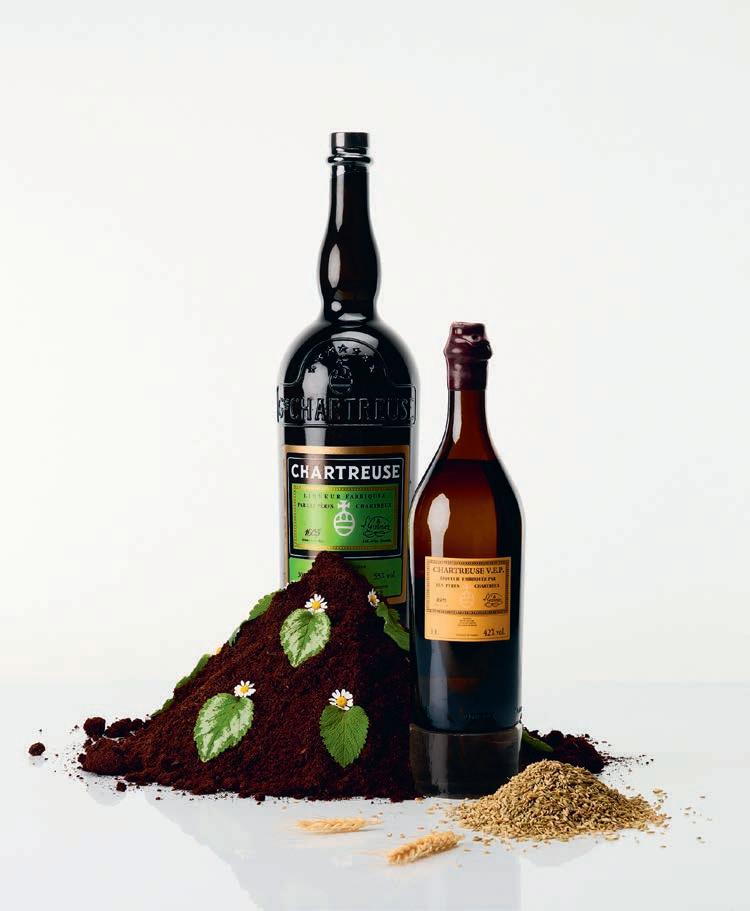

used in the composition of the liqueur are a combination of wild and cultivated plants (bought locally, but also from other regions and even other countries), and their origins must therefore have been partially changed following the move to Catalonia.
The spirits essential to the making of Chartreuse would also have had to change their origin (Tarragona, instead of France). The spirits used to make Chartreuse liqueur are most often distilled from wine, or sometimes made industrially from sugar beet.
Finally, the conditions under which the liqueur was aged on the premises in Tarragona often inspire the imagination of afficionados of the Catalan period: the cask containing the precious liqueur was aged (in whole or in part) in the attics of the distillery overlooking the Plaça dels Infants. The external conditions (temperature variations, humidity due to the proximity of the sea, ...) would have, one can imagine, imposed particular conditions on the immense building housing the spirits and the ageing of them under the roofs of the distillery.
From the mid-1960s onwards, the Carthusian monks in Tarragona were faced with an increasing number of administrative concerns and urban planning pressures, until 1989, when the Tarragona distillery closed down definitively and the last employees left the site, which then remained deserted for many years before it was acquired and rehabilitated by the regional government of Catalonia.
‘Stat crux dum volvitur orbis’.
Chartreuse liqueur is unique and its admirers are many. Its secrets and history intrigue. Its intrinsic qualities make it a desired nectar, sought after the world over. Happy are those who have one day had the opportunity to drink an old Chartreuse, for this experience will stay with them for the rest of their lives!
800 bottles: It is truly extraordinary to have the pleasure of contemplating a collection of Chartreuse liqueurs made up of so many bottles assembled into a single collection, with impeccable provenance and perfect storage conditions. It took a great deal of passion, knowledge and perseverance to bring together these bottles, which we have the pleasure of showcasing in our June sale. This collection bears witness to a long, humble and joyous journey. It is therefore with great emotion that we open the door to this admirable collection, which we have decided to call “ Humble treasures ”. Although largely devoted to the Tarragonese period, the collection also features works from Voiron and more recently from Aiguenoire. ‘Humble Treasures’, a private French collection, carefully and patiently put together during a period of over ten years, by a collector in the Rhône-Alpes region, will be presented in Geneva on 5 June. It bears the hallmark of passion and sharing, the desire of one person to bring together the crème de la crème of his passion to create a unique collection with a very distinctive character!
Julie Carpentier
13 time to B wine #16 — may 2024 — julie’s chartreuse
“Humble treasures” | online kipling #7 auction livestreamed from geneva | wednesday june 5, 2024 at 1pm

under the sun
s a wine enthusiast, discovering a hidden gem within a collector's cellar, forgotten even by its owner, is an experience that dreams are made of. Recently, we were granted the privilege of inspecting an extensive collection of a renowned connoisseur, a cellar so vast that even if he hosted the most lavish parties, he couldn't possibly uncork all its treasures within the next three decades.
We began our exploration with an impressive array of vintage Champagnes and Bordeaux wines, ranging from the 1950s to the late 1980s. The collector's acquisitions had been paused in the 1990s but resumed in the 2000s. The first revelation was a substantial collection of Château Mouton Rothschild 1986, which I personally favored over its 1982 counterpart, despite the latter being a legendary wine in everyone’s heart. The 1986 vintage exhibited greater power and dedication, with the potential for a longer life at its peak. Savoring mature Bordeaux that has been cellared for over 40 years is always a pleasure, as the extra depth of dried fruit and herbs created by maturation is simply irresistible. We also encountered rare treasures, such as an ex-château Latour double magnum set nestled in a giant round wooden case, more exquisite than most furniture, a Pavie 100-point set, and the Léoville Las Cases Grand Vin de Léoville de 9 collection.
Stepping into the Burgundy room was a moment of pure delight, with meticulously arranged bottles of Domaine Georges Roumier Musigny from various vintages taking center stage. The clean, classic color labels seemed to perfectly showcase the purity of the wine within. Racks upon racks of Domaine de la RomanéeConti followed, predominantly from exceptional years like 1990, 1999, and 2002, as well as the eternally revered Henri Jayer, which evoked memories of curating the Heritage ex-Henri Jayer domaine sale in 2018. Our eyes then fell upon a majestic 3-liter bottle of Domaine de la Romanée-Conti. When we inquired about the possibility of consignment, the owner casually mentioned that he had a few more bottles of Romanée-Conti and La Tâche, should we be interested.
A spacious, dedicated room was solely devoted to Penfolds Grange, a testament to the owner's deep-rooted passion for this iconic Australian wine. His enthusiasm for the history and uniqueness of Penfolds Grange was evident not only through his comprehensive collection but also through his profound appreciation and knowledge. Penfolds Grange was initially known as Penfolds Grange Hermitage until the 1989 vintage, a name that paid homage to the origin of its vines from Hermitage. The blend is predominantly composed of Syrah/Shiraz and a smaller proportion of Cabernet Sauvignon. The
14 time to B wine #16 — may 2024 — francesco's sunkissed “kipling”

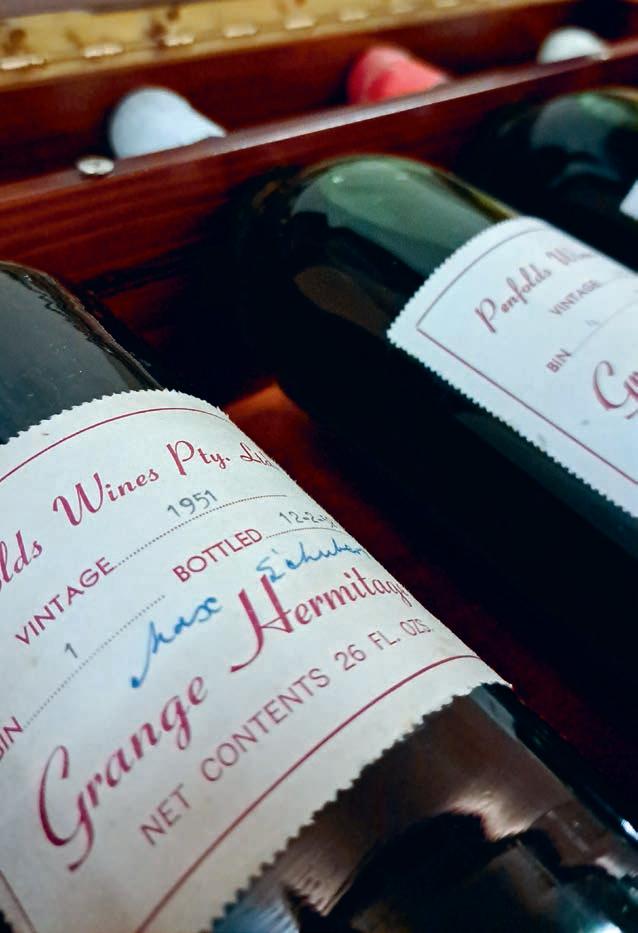
inaugural 1951 vintage, masterfully crafted by the legendary Max Schubert, yielded a mere 1,800 bottles. Grange briefly vanished from the market between 1957 and 1959 due to negative wine critics comments. However, Schubert, undeterred by management's prohibition, secretly continued to produce this magnificent Grange. Official production and sales resumed in 1960, and the 1955 vintage that were negatively criticized , entered into a worldwide competition in 1962, garnered an astonishing 50 gold medals in the years that followed. The 1971 vintage triumphantly claimed first prize in the Shiraz category at the prestigious Wine Olympics held in Paris.
Although many are acquainted with the term "Bin" as a storage location and a naming convention used by Penfolds and numerous Australian wineries, few are aware that the 1951 vintage was initially labeled as "Bin 1," the 1952 as "Bin 4," and subsequent vintages bore different bin designations until "Bin 95" was adopted from 1964 onward. Schubert retired in 1975, entrusting the stewardship to Don Ditter, whose 1976 vintage was rewarded with a perfect 100-point score from the esteemed Robert Parker before Ditter's retirement in 1986. John Duval further raised the bar for consistent excellence, earning the prestigious International Winemaker of the Year accolade in 1989 before his own retirement in 2002. The 1990 vintage was a landmark year, not only as an exceptional global vintage across the board but also as the introduction of the "Grange" label, a change necessitated by the European Union's ruling on appellation laws. Peter Gago has been at the helm as chief winemaker since 2002 and the 2008 vintage became the first to receive perfect 100-point scores from both Wine Spectator and Wine Advocate.
The collector's most prized possession was a collection featuring handwritten signatures on the labels from each respective winemaker, encompassing vintages from 1951 to 2010, including the elusive and coveted 1951 vintage – a true museum piece that encapsulates the enchanting history of Grange. Standing before this collection, I felt a sense of awe akin to being in the presence of Michelangelo's masterpiece, the David. This collection is the last known to include the 1951 vintage, as Penfolds will be unable to release any more. The opportunity to hold a physical bottle of the 1951 Grange is a rare honor bestowed upon a fortunate few. I found myself glancing at my watch, wishing to suspend time. Who has the luck to drink this 51?
This cellar is a veritable paradise for the traditional wine lover, boasting a diverse array of regions, from the sparkling heights of Champagne like Dom Perignon White Gold 3L to mature Bordeaux, crowned Burgundy, the iconic Grange, and also the warrior whiskies. The complete Port Ellen annual release collection, spanning from the 1st to the 17th edition, is a gem in its own right. The subtle style of Port Ellen never fails to leave a lasting impression on both the palate and the soul.
Just as we were about to depart, the collector suddenly remembered some La Tâche that had escaped his mind for few years, and he was eager to open a bottle for us to experience. In an attempt to conceal my enthusiasm and curiosity regarding the performance of a low-fill bottle, I selected one with a 5-centimeter ullage. Unable to resist the temptation, I postponed my departure to partake in this vinous treasure, especially since it was from my birth year. As we savored the wine, it became apparent that providence was on our side. The low-fill bottle astounded us all with its quality. Will you take the same decision as mine?
Francesco Lee
15 time to B wine #16 — may 2024 — francesco's sunkissed “kipling”
“ Sunkissed ” | online kipling #8 auction livestreamed from geneva | wednesday july 3, 2024 at 1pm

art & wine – look
time to B wine #16 — may 2024 — virginie from a world to another…
ince September 2023, I have been working as an auctioneer at Baghera/wines France and living my life with passion, moving from the world of art to the world of wine. So what could be more natural than to offer you, in this my first contribution to time to B wine, an approach that embraces these two worlds. Let's embark on a totally subjective, synaesthetic experience, in which my visual perceptions should simultaneously generate auditory and gustatory sensations. Provided I am attentive. I am going on a quest for the taste of a work of art, giving you a tasting note and suggesting an art & wine pairing.
the art
Impressionism celebrates its 150th anniversary this year. I have decided to honour this anniversary by taking the obvious route of the Musée d'Orsay and its current exhibition, which demystifies the founding episode of the first exhibition in 1874, bringing together works by Monet, Renoir, Degas, Morisot, Pissarro, Cézanne and Sisley. Tuesday 16 April. Full. Obviously, the crowds put me off. How can I fully experience the work in a crowd? I'll go to the Orangerie the next day, at opening time. I will be the first in the rooms where the Water Lilies are exhibited. Immersed. And there, in this veritable ‘Sistine Chapel of Impressionism’, as André Masson called it, I will go from dazzlement to delight.
Wednesday 17 April. 9 am. And that's exactly what happened.
At the entrance: “ THE WATER LILIES BY CLAUDE MONET – The Water Lilies rooms were conceived by Claude Monet as places for meditation: in order to respect his wishes, we invite you to visit this exceptional work in silence.”
And that is very well said. A religious silence still reigns in the room. I rediscover these monumental compositions that I so enjoyed visiting when I was a student. But this time I have come with a very specific intention. To observe, see, feel, identify and express, from the eyes to the palate. I instinctively set my sights on one of the
paintings. Before this masterpiece, I am overcome with emotion and literally experience the painting as it unfolds through sensations, impressions and variations. All of Impressionism is here, before me. All of Abstraction too. For if Monet is one of the fathers of Impressionism, he is also one of the fathers of Abstraction. And the panel that consumes me makes a magnificent link between the two. I enjoy a unique experience before this panel, the exact title of which I still do not know. Absorbed. Never have I seen it through these eyes. Never have I perceived so many waves on the surface of this pure water. The water lilies as a pretext for a much more vast and abstract representation. Through the vibrations of the canvas, the great master of modernism plunges us into a world of sensations and depths that resonate between the painter and ourselves. The painting then becomes a medium of exchange between the painted impressions and our own sensations, memories, dreams. From left to right, I see aquatic plants competing with the nebulous background, to which a cameo of turquoise gradually lends radiance as my gaze wanders from the edge of the painting. And there is the climax: the second quarter of the painting. Claude Monet, a painter of light, plays with it like a musician with his notes, and here he creates the light that sets the whole rhythm of the painting. I feel good at this point in the painting. It is the moment that warms the surface of the water that is strewn with flowers. The water lilies tinged with white and red are barely discernible, yet in the centre of the painting I project an abundance of flowers, clouds of flowers even, straight from the cherry trees of Japan in spring. Then this flowery sensation disappears and a lighter vision takes its place, joyful and airy. Generous, cottony pink clouds pass before my eyes. Pink clouds... And yes, there it is, the communion of nature. The sky is reflected in the water. The clouds flutter across the surface of the pond, lending volume to the canvas. The legacy of the pre-impressionist skies of Eugène Boudin, so much admired by Claude Monet, is not far away. I am overcome with emotion. Emotions intermingle like the painting, with its
16

how good it is !
shadows and highlights, to touch on the subtle balance present in nature. Everything in motion. There is no longer any surface. There is only mass, infinite, moving, magical. The imprecision of the forms and the blurring of the contours distance the subject from its expected figuration to evoke the effects of the soul, to broaden the vision and touch on abstraction. Then comes the final act of the painting. On the right, the darkness seeps over the broad, luminous breath, so precious in the centre of the work. Night falls. My heart tightens. This is the end. Les Nuages (The Clouds), as I later learned the work was titled, is to my mind a masterful allegory of life that engages at once the senses and the mind. I could not have chosen a better first synaesthetic experience to share.
The Water Lilies by Claude Monet (1840-1926) is a group of eight panels, each measuring 200 x 600 cm and housed in the Musée de l'Orangerie in Paris.
The painter of plein-air painting drew his inspiration from the Japanese-accented 'water garden' at his estate in Giverny, Normandy.
Two panels were donated by the painter through his friend Georges Clémenceau the day after the armistice of 11 November 1918, as a symbol of peace. He donated the other 6 panels in 1922 and the collection was installed in the Musée de l'Orangerie in 1927, after the artist's death.
In the 21st century, David Hockney makes no secret of the master's influence in his work, and Oliver Beer will be taking up the water lily cycle at Hangar 107 in Rouen from 23 May to 21 July with his Resonance paintings, created using reconstructed sounds from the Giverny pond.
Claude Monet painted more than 250 works on the theme of water lilies, including Le Bassin aux nymphéas (Water Lily Pond), painted 1917-1919, which sold at auction for 74 million dollars at Christie's in New York in November 2023.
the wine
Before this monument of painting, the wine must inevitably be exceptional.
Monet's work is of an incomparable intensity, luminous and free, rich in contrasts, powerful and poetic.
The wine will be an exceptional white, a Champagne even, combining depth with breath, brilliant aromas and a finish that holds us in the light.
So I look to Julie Carpentier for her expertise and experience.
On reading my tasting notes, the pairing is obvious. The wine will be a Champagne Jacques Selosse.
“ This monument of painting intuitively evokes another monument, that of vines and wine: the Substance cuvée by winegrower Anselme Selosse, whom we had the pleasure of welcoming in Geneva very recently with Marie-Thérère Chappaz - another monument in the world of winegrowing, this time from the Valais. The Selosse family's highly personal, intuitive approach, which could also be described as Burgundian, is embodied in the fascinating Substance cuvée, which echoes the work of Monet.
Substance is a blanc de blancs from a single vineyard (Avize) made using a unique solera system. The blending has been completed each year with more recent vintages, for almost 40 years.
Substance is a unique wine. Once you've tasted it, you'll never forget it. It makes an impression like no other wine. For its unique nose, which over the years has conjured scents of hazelnut, almond, honey, citrus fruits, sometimes caramel, a fine minerality and, finally, an unchanging, slightly oxidative note. For its very fine mousse on the palate and its pure, refined balance. And finally, for the chalky tension on the finish which is characteristic of Anselme Selosse's wines, and the crystal-clear clarity that brings this monument to Champagne viticulture to a close.”
Many thanks, Julie. The match is made!
I will end this Art & Wine correspondence with a thought for Charles Baudelaire, the great poet of modernity, who wrote his poem Correspondances in Les Fleurs du mal in 1857 to ‘sing the transport of the spirit and the senses’ and the synesthetic associations he later theorised. Baudelaire had a fine nose!
Virginie
Maison
17 time to B wine #16 — may 2024 — … art and wine
©GrandPalaisRmn (Musée de l'Orangerie) / Michel Urtado

oday, I’d like to talk to you about a wine-growing region that is particularly close to my heart, as it was home to me when I first left Burgundy.
Nestled in the heart of the majestic French Alps, between snow-capped peaks, crystal-clear lakes and lush green valleys, the Savoie vineyards are undoubtedly one of the most historic treasures of French winegrowing, but also the most recently renowned, thanks to the persistent work of winegrowers and the new generations.
Let’s leave aside the old clichés about dry, high-altitude white wines or tartiflette reds and focus on the quality and richness of this vineyard.
The Savoie vineyards cover some 2,200 hectares spread across Savoie, Haute-Savoie, Ain and Isère, mainly along the Rhône, stretching from Thonon-lesBains to the shores of Lake Geneva, via Frangy, Seyssel, Chautagne and the shores of the Lac du Bourget, then southern Chambéry between Grenoble and Albertville, with a minor detour to flourish in the Arve Valley.
Over and above this majestic setting, these high peaks have played a key role in defining the characteristics of the soils and their richness for producing high quality white wines. They are the result of the geological evolution of the birth of the Alps, and even of the Jura chain in certain areas of the Chautagne terroir. The vast majority of the soils are composed of limestone or, more precisely, limestone scree, which as it falls from the mountains forms the terroir so favourable to white wines, but marl, quartz and schist are also present. In addition, there are soils made up of glacial moraines, the remains of ancient glaciers that in retreating smoothed
the valley floors. There are also a few areas with veins of clay, such as the Arbin sector, renowned for its red laying-down wines.
The Savoie vineyards also boast another great asset: indigenous grape varieties. Indeed, the history of this region is closely linked to the significant work carried out by nursery growers, which has led to the development of over 20 species of indigenous grapes, including 8 varieties that are unique in the world. Altesse, one of my favourites and often compared to the Hungarian furmint, is the grape variety of choice for the Roussette de Savoie appellation. Dominique Belluard has put this small Ayse vineyard, near Bonneville, and its native grape variety on the map of France’s greatest whites. Jacquère, the most widely planted white grape variety in Savoie (50% of the vineyards), is used to produce the wines of Abymes, Apremont, Chignin, Cruet, Jongieux and Saint Jeoire de Prieuré. Molette blanche for the Seyssel AOC, and mondeuse blanche, a rare and precious grape variety, as there remain only a few hectares planted in the world. Mondeuse noire, a red grape variety with character that can be compared to syrah in its peppery, spicy quality. Persan, an ancient grape variety that has been revived by certain winegrowers such as Domaine Saint-Germain. Douce noire or corbeau, a red grape variety that was widely planted in Savoie before the phylloxera crisis. It was banned in 1958, but reintroduced in 2008.
Despite the wealth of grape varieties in this region, only 3 AOCs exist in Savoie: AOC Vin de Savoie, AOC Roussette de Savoie and AOC Seyssel, as well as the Isère and Vins des Allobroges PGIs.
18 time to B wine #16 — may 2024 — Gary's travels…

When talking about the quality of a vineyard, the faultless work of the myriad estates that highlight the qualities of this terroir every day must also be emphasised. To name but a few: Dominique Lucas’ Vignes de Paradis, Domaine des Orchis for its magnificent altesse and mondeuse, Domaine des Ardoisières, Domaine Giachino, Domaine Fabien Trosset, Raphaël SaintGermain and Adrien Berlioz.
Let me tell you more about one estate in particular that has inspired many young winemakers in Savoie: Domaine Louis Magnin. The estate has been in existence for three generations, and Louis Magnin, who celebrated his fiftieth harvest last year, would be nothing without Béatrice, his vivacious and resolute wife. This couple, both in life and in work, has played a key role in the contemporary history of Savoie winegrowing. Located in the village of Arbin, in the Combe de Savoie valley between Chambéry and Albertville, this estate backs onto the Massif des Bauges on the Arbin-Montmélian hillside, and its soils are mainly composed of clay-limestone scree. Its south/south-east exposure and altitude allow the grapes to ripen slowly, producing wines with a dense texture and complex aromas. As the estate’s surface area has been considerably reduced, from 8 hectares to 3 hectares, only three grape varieties are grown, and by no means the lesser....
Altesse for its Roussette de Savoie, a charismatic wine bursting with freshness, this precise Roussette with notes of ripe apricot and quince and candied fruit seduces with its fullness and unctuosity while retaining an incredible purity.
Roussanne, or more precisely bergeron, in the Chignin Bergeron appellation. Its luminous, brilliant strawyellow colour will captivate you. The nose is a delight, developing aromas of acacia honey, brioche, fresh butter and mushrooms with a hint of white truffles, like its Valais counterpart, Ermitage.
And last but not least, mondeuse noire, the vibrant red grape variety of the Arbin appellation, revealing aromas of blueberry, black fruit and spices with a tannic structure that is present but easily digestible. I particularly remember the cuvée ‘Tout un monde’ 2018, tasted at the estate with Mr Magnin, where he told us he had produced one of his best mondeuses in 50 years of winemaking. Some will see this as a reflection of the winemaker’s experience, others of the changing nature of a warming climate or still others of the winemaker’s knowledge of his terroir! Personally, I see it as a whole, and that mondeuse was exceptional. From a small parcel of century-old vines, with only 3000 bottles produced, the wine is dense but low in alcohol (11.5%), fresh on the palate and very fruity, with magnificent aromas of blueberry, black cherry and truffle. The mellowness of the vintage gracefully accompanies the dryness and tannic structure of the mondeuse. Undoubtedly my most emotive experience with this grape variety.
It goes without saying that such a fine estate, capable of conveying so much emotion through a bottle, simply has to be present in our boutique! So do drop in to discover the fine bottles of Louis Magnin and the many other Alpine treasures in our boutique in Geneva. And as a Savoyard would say: Santât et arvi pa! Gary Bovagne
19 time to B wine #16 — may 2024 — … and back to la boutique !
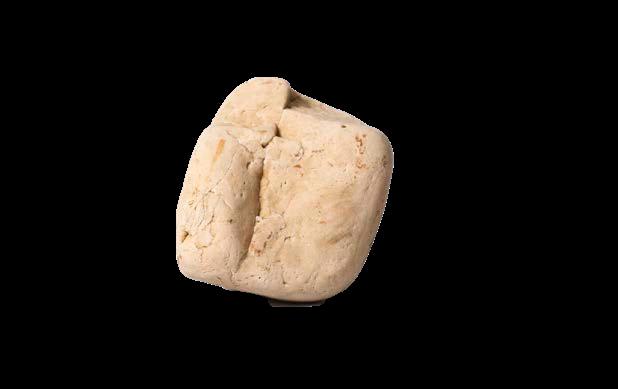
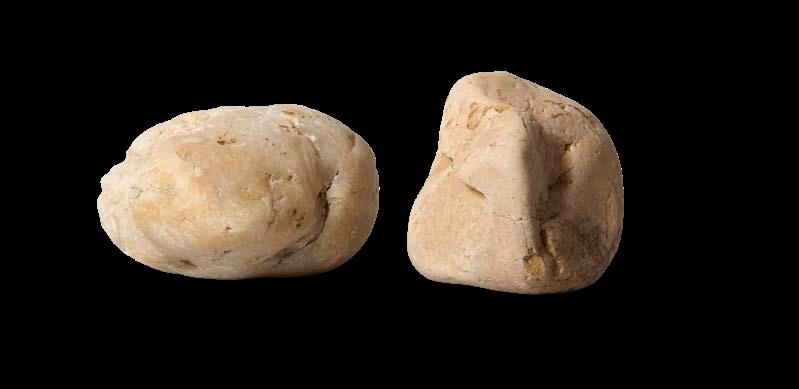
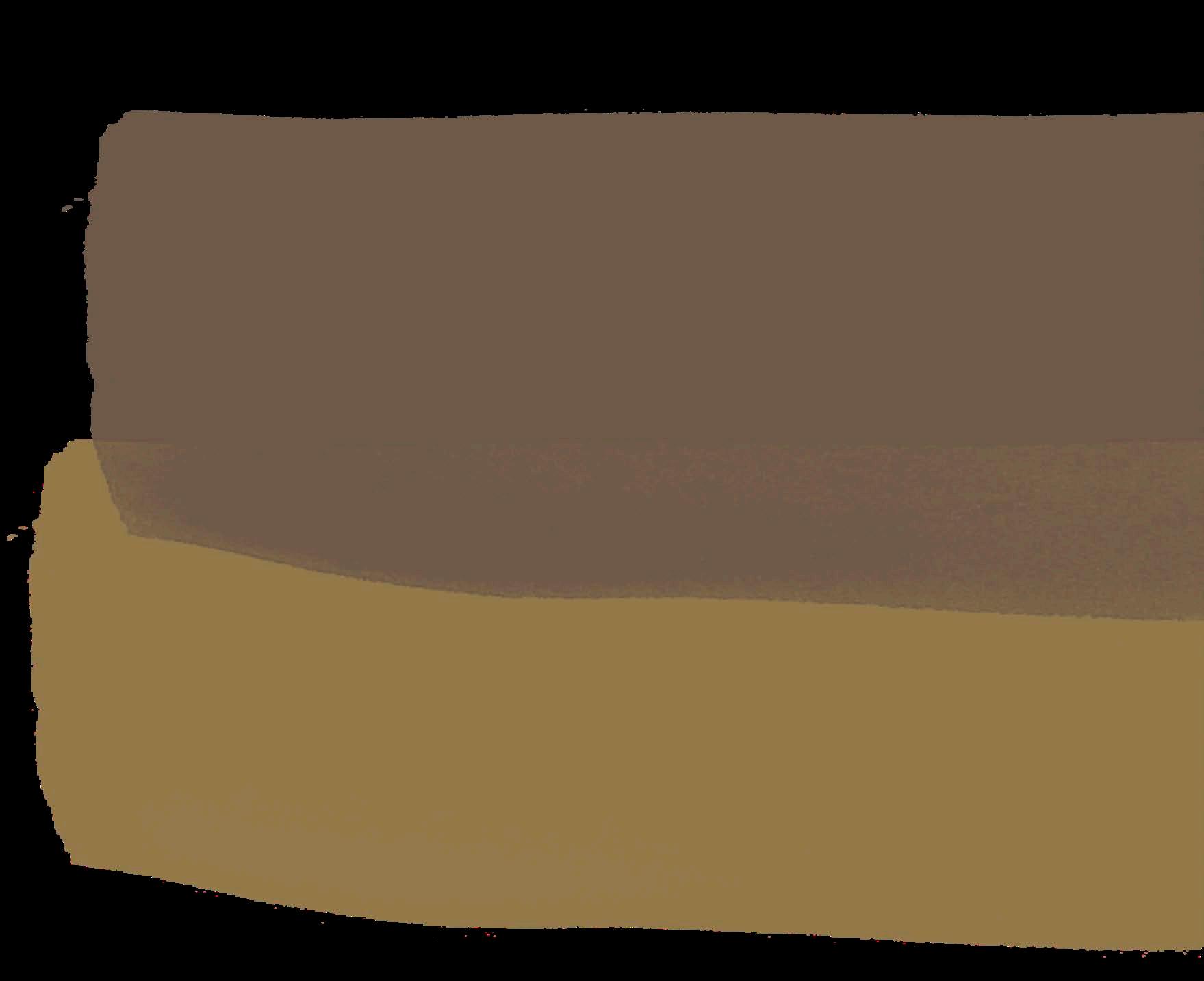
rue adhémar-fabri, 2 – 1201 geneva, switzerland tel + 41 22 910 46 30 – office@bagherawines.com www.bagherawines.com follow us on instagram
printed by la manufacture deux-ponts (38320 bresson, fr) in may 2024 — Baghera/wines
SA — all
credits — editors & contributors : michael ganne, camille balboux, bruno borie, olivia bouët-willaumez, julie carpentier, francesco lee, virginie maison, gary bovagne — art direction & layout : olivia bouët-willaumez iconography — vincent gelly (p.1, 12-14), alex teuscher (p. 2), the new-york public library (p.3), château ducru-beaucaillou (p.4), olivia bouët-willaumez (p.7-11), francesco lee (p.15), grand-palais rmn (p.16-17), istock (p.18-19)
Auction & Trading
rights
reserved, 2024 all about the sale




















 Château Ducru-Beaucaillou 2005 — Sublime perfume of rose petals, kirsch, blackberry preserve and star anise, with a touch of sweet tobacco leaf and fine oiled leather. Full-bodied with a dense core of flavours wrapped in a tightly knit frame of finely polished tannins, supported by
Château Ducru-Beaucaillou 2005 — Sublime perfume of rose petals, kirsch, blackberry preserve and star anise, with a touch of sweet tobacco leaf and fine oiled leather. Full-bodied with a dense core of flavours wrapped in a tightly knit frame of finely polished tannins, supported by













